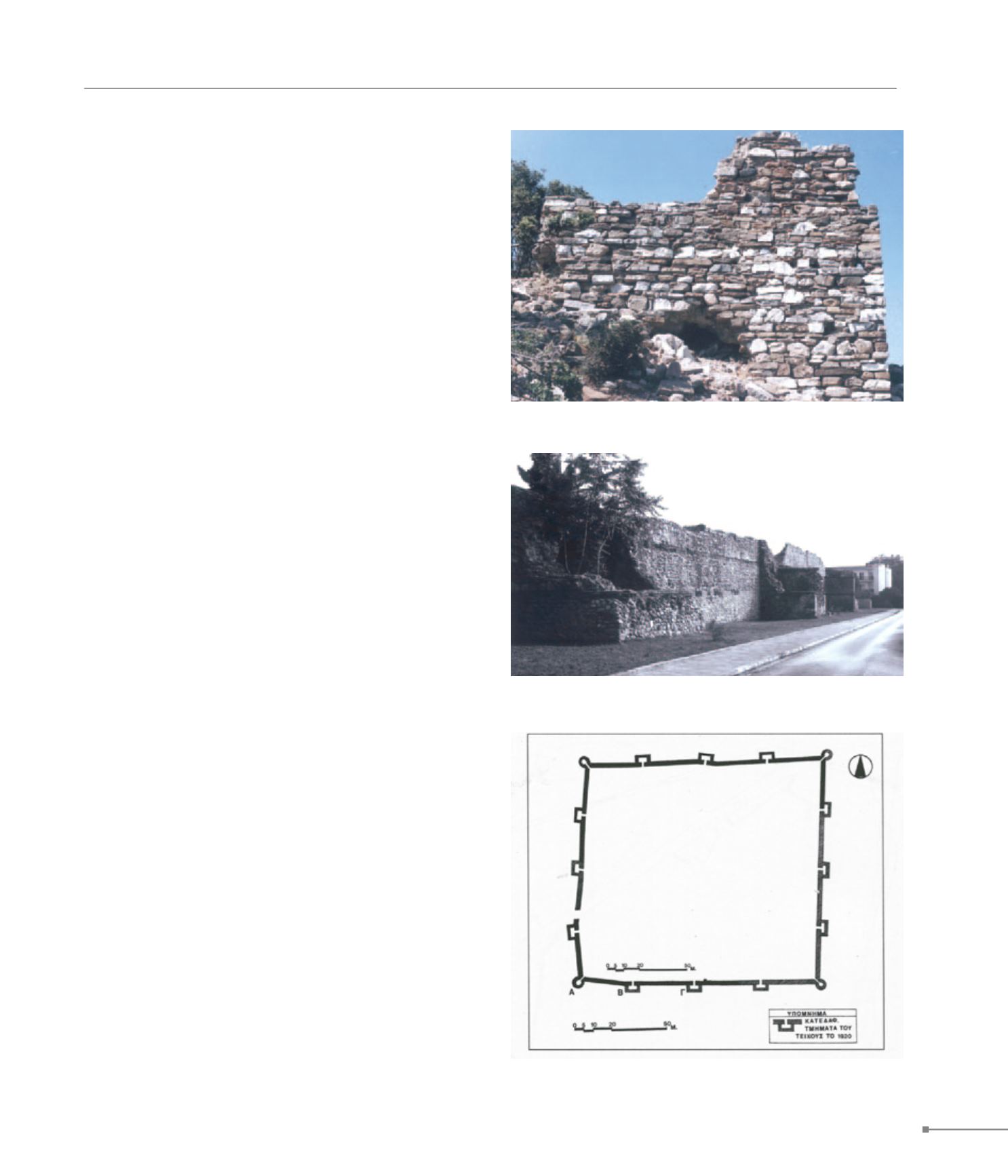
Gratini. Gratianou, Gratsianou or Gratianopolis.
Mischos. Maximianopolis - Mosynopolis.
THRACE
87
15. Gratini, tower (Γρατινή, πύργος)
17. Komotini, walls (Κομοτηνή, τείχη)
17. Komotini, fortress, ground plan (Κομοτηνή, το κάστρο, κάτοψη)
15.
Gratini. Gratianou, Gratsianou or
Gratianopolis.
This became a significant fortress in the Late Byzantine period.
During the civil wars it came under the domination of Matthew
Cantacuzenus twice, and became his seat until 1357. In 1364-
65 it was captured by Evrenos. Ruined parts of the walls and of
two towers (one circular and one quadrilateral) survive, prob-
ably dating from the 9th or 10th c.; a cistern survives inside
the enclosure. At the modern village, in the shade of the for-
tress, a small Byzantine church has been excavated, which had
probably been destroyed in the 13th c. A pottery workshop was
established on its ruins. The excavation also brought to light
koutroubia from Thessaloniki and a hoard of coins dating from
the first half of the 13th c.
16.
Nymphaea.
On an elevation close to Komotini, on the way to the contem-
porary Hellenic-Bulgarian border, quadrilateral defensive walls
with towers at the corners are preserved at the site of Palaio
Frourio. They probably date from the Late Byzantine period.
17.
Komotini
.
Koumoudjina.
A fortress known as Koumoudjina in the Byzantine period was
taken by Evrenos in 1364-5. It is located in the heart of the mod-
ern town, a small, rectangular castle lying on the Via Egnatia,
dating from the late 4th or 5th c. and possibly built by Theodo-
sius I (r. 379-395). There are no indications of earlier parts of the
fortress. Between the 10th and 12th c. occasional and limited
repairs were made to various sections of the walls. There are
circular towers on the corners and quadrilateral towers at in-
tervals, all with wooden floors. The masonry is of roughly hewn
stones and bands of bricks in four rows. In the E side of the
fortress there is a double staircase to the wall’s rampart walk,
possibly of the Comnenian period. This site has revealed the
cover of a sarcophagus, which is probably Byzantine and bears
an inscription.
18.
Mischos
.
Maximianopolis - Mosynopolis.
Maximianopolis was founded along the Via Egnatia during the
Roman period. It was an episcopal see from Early Christian
times and a general’s headquarters in the mid-Byzantine pe-


